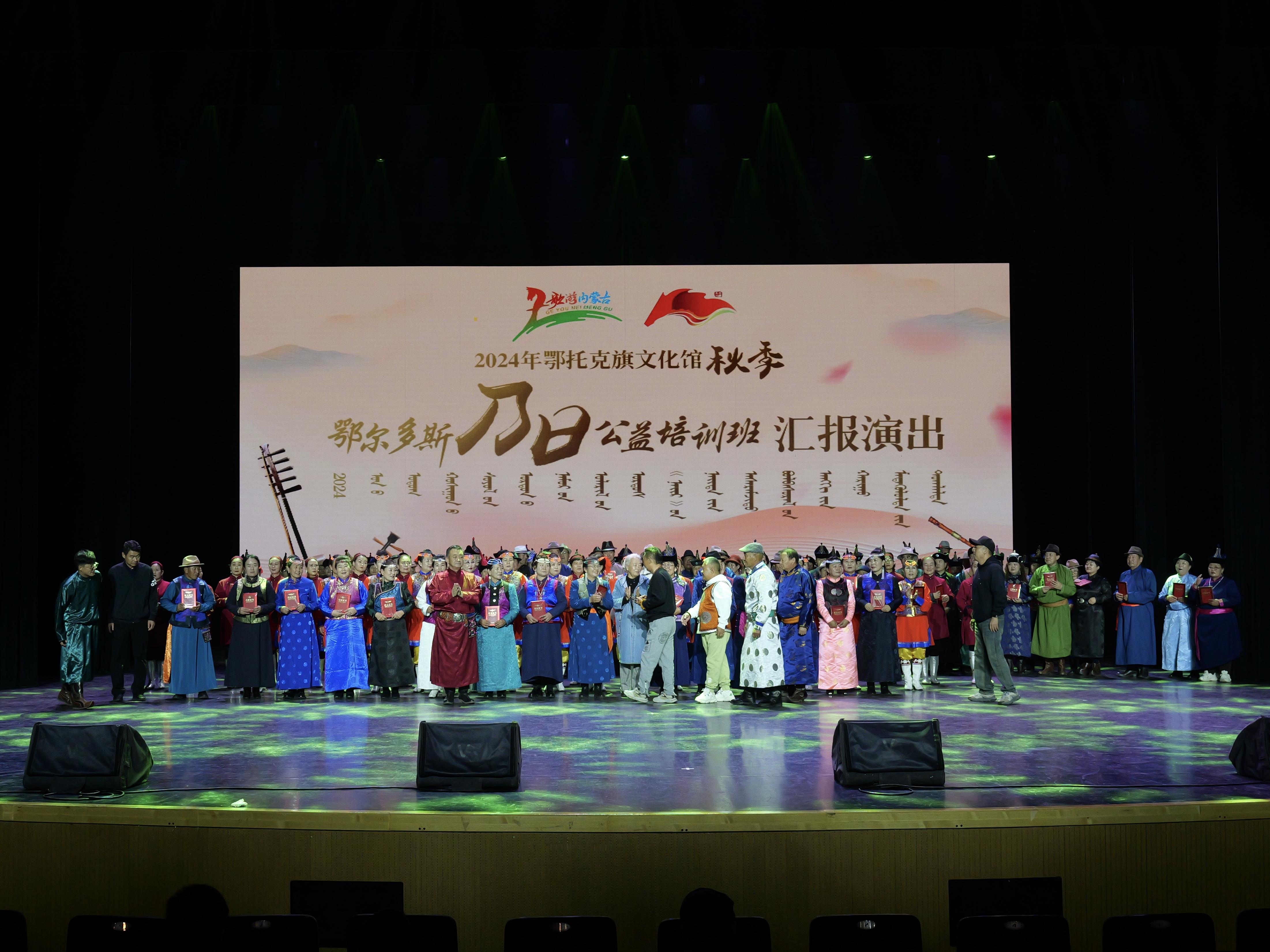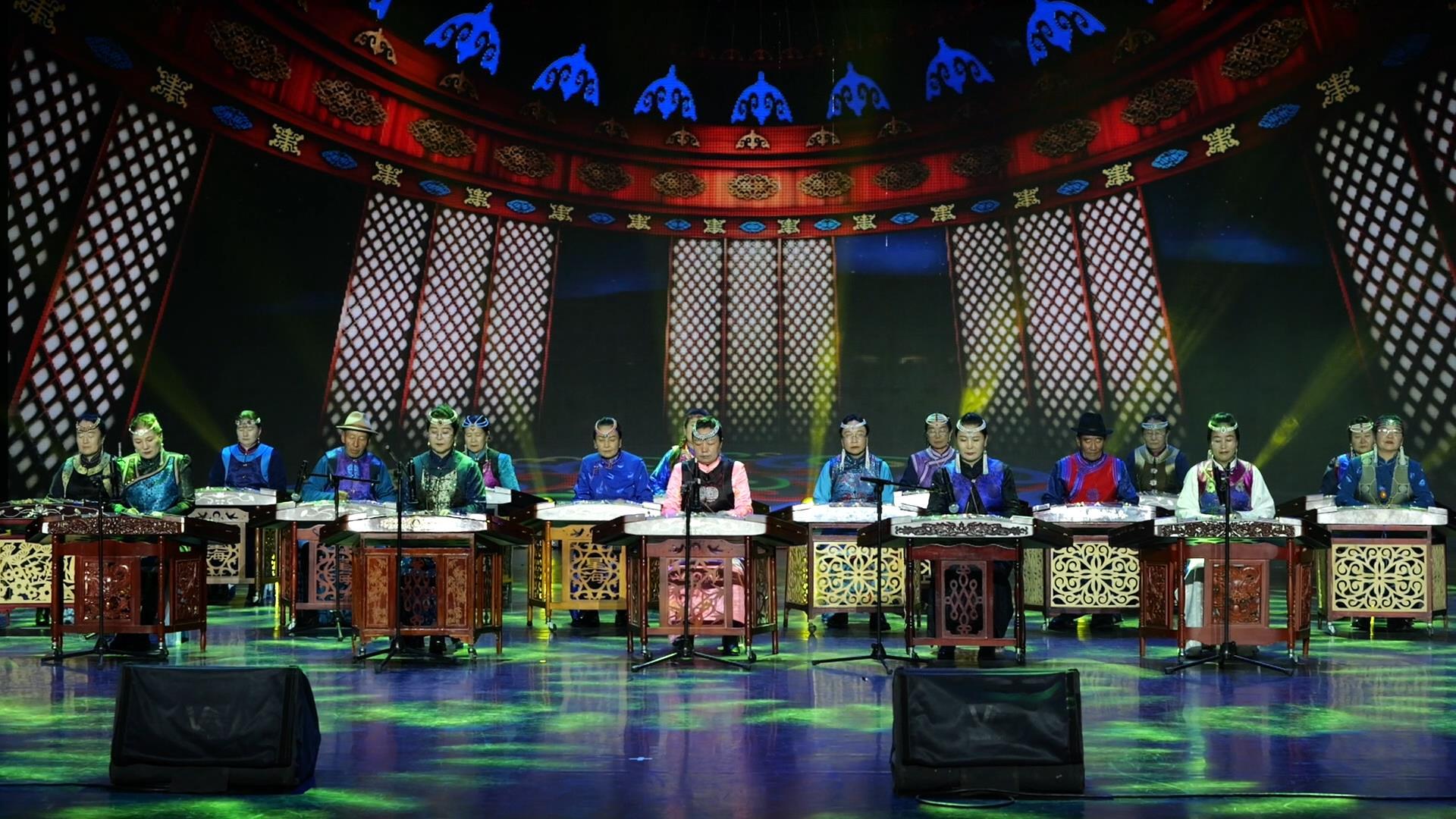
On the morning of Nov. 8, the vibrant strains of Inner Mongolian music filled the air of the Otog Banner Cultural Center in Ordos. Over 200 students from the Ordos Nair

The Ordos Nair community training class performs on stage at the Otog Banner Cultural Center in Ordos, Inner Mongolia, Nov. 8, 2024. [Photo provided to China.org.cn]
The Nair culture of Ordos, a regional intangible cultural heritage, originated during the Yuan Dynasty (1279-1368). In the Mongolian language, "Nair" means entertainment and gathering, and encompasses a range of folk arts including songs, music and dances.
Today, thanks to a group of dedicated inheritors, the culture is thriving again, carrying the essence of the grasslands across time and sharing the stories of its people far and wide.

Manglaibatar poses for a photograph alongside schoolchildren learning the daqin. [Photo provided to China.org.cn]
Manglaibatar, a 65-year-old cultural inheritor from the Inner Mongolia autonomous region, has been immersed in Nair culture from a young age. He learned to sing local folk songs when he was 6, picked up traditional instruments like the sanxian and sihu at the age of 12, and started performing in public at 15 years old. Recognized in 2014 as a key representative inheritor of intangible cultural heritage in Inner Mongolia, he founded a training center in 2016, which later became the Ordos Nair Protection and Promotion Base, the first official base in Otog banner. In 2022, it began offering free classes to enthusiasts.
Yangdalai, 59, is a student of Manglaibatar and one of the first batch of students in the Ordos Nair Protection and Promotion Base. In 2020, he started learning the sanxian with no prior experience. Despite his relatively late start, he quickly developed a deep passion for the instrument, his fingers deftly coaxing melodies from its strings. "As long as you love the Nair culture, you can come to learn it," he said.

Chinese dulcimer players perform on stage at the Otog Banner Cultural Center in Ordos, Inner Mongolia, Nov. 8, 2024. [Photo provided to China.org.cn]
Like his mentor, Yangdalai plays by ear without the need for formal scores. "We can play the same tune with several techniques, and the melodies are the same," he added.
When it comes to promoting the culture, Manglaibatar stressed the importance of introducing this intangible heritage in schools. "We should cultivate an early interest in children. The preservation of intangible cultural heritage should begin with primary school students," he said.
Since 2014, Manglaibatar has been teaching instrument playing and Nair customs in Otog Banner Mongolian Experimental School twice a week in off-campus hobby programs. He hopes to instill in the younger generation a deep appreciation and understanding of their rich cultural heritage through these classes.

Dancers perform on stage at the Otog Banner Cultural Center in Ordos, Inner Mongolia, China, Nov. 8, 2024. [Photo provided to China.org.cn]
In recent years, Otog banner has actively tapped into the rich ethnic cultural heritage of Ordos' Nair. Through the establishment of the protection and promotion base, along with the initiation of community training classes, the art troupes in Otog banner have seen significant growth. According to Dudagula, curator of the Otog Banner Cultural Center, the banner now boasts 127 troupes and over 2,000 performers, with the number of annual performances topping 1,000.
"At first, the age requirement for trainees ranged from 6 to 65 years old. However, as interest grew, many individuals over 65 also wanted to participate. Now, the oldest student is an 82-year-old woman who is learning the daqin," Dudagula explained.
"Some students even travel more than 200 kilometers every single day to attend the class," she added.
